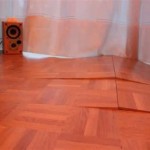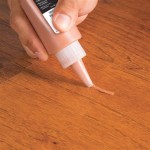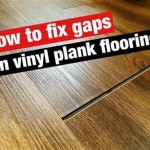Removing hardwood floors is a major project that can be intimidating for even the most experienced DIYer. This guide will provide you with the necessary information to ensure a successful and stress-free hardwood floor removal project.
Assess the Floor
Before starting to tear out your hardwood floors, it is important to assess the condition of the existing flooring. Many hardwood floors are nailed to the subfloor, so you should determine if the floor can be safely removed without damaging the subfloor. If the floor is glued down, you will need to use a heat gun or a floor scraper to remove the adhesive. If you are unsure about the condition of the floor, consult a professional for advice.
Choose the Right Tools for the Job
Removing hardwood floors requires the use of several tools. If you plan to use a pry bar, make sure you select one that is the right size for the job. You will also need a hammer, a utility knife, a reciprocating saw, a floor scraper, a heat gun, and protective gloves and eyewear.
Prepare the Room
Before starting the removal process, make sure you have removed all furniture, rugs, and other items from the room. Cover any valuables with a tarp or drop cloth and lay down drop cloths or tarps over the areas where you will be working. This will protect your floors and walls from damage.
Start Removing the Floor
Once the room is ready, you can begin removing the hardwood floor. Start by prying up the boards nearest to the wall and working your way across the room. If the boards are nailed to the subfloor, use a hammer to remove the nails. If the boards are glued down, use a heat gun or floor scraper to remove the adhesive. Once the boards are removed, you can use a reciprocating saw to cut the boards into smaller pieces for easier removal.
Dispose of the Waste
Once all of the flooring has been removed, you will need to dispose of the waste. Separate the debris into piles for wood, nails, and adhesive. Wood, nails, and adhesive can all be disposed of at your local landfill or recycling center.
Clean the Subfloor
Once you have removed all of the debris, it is important to clean the subfloor. Sweep the area thoroughly to remove any dirt and dust. If there are any nails sticking out of the subfloor, use a hammer to drive them in. Once the subfloor is clean, you can start planning for the new flooring installation.
Conclusion
Removing hardwood floors can be a daunting task, but with the right tools, the right preparation, and a bit of patience, it can be completed successfully. This guide has provided you with the necessary information to ensure a successful and stress-free hardwood floor removal project.

:max_bytes(150000):strip_icc()/Man-removing-floor-GettyImages-200467183-001-b20da3c5e3884f0ea2b171a20a8de124.jpg)













Related Posts








